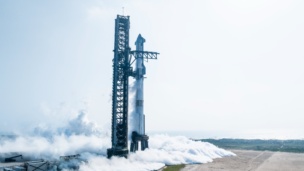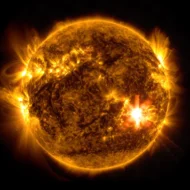We found Tatooine. Luke Skywalker, here we come.
Researchers at the University of Birmingham have been tracking the trajectory of Kepler-16b, a planet orbiting two stars that also orbit one another. And yes, if you stood on the surface of the exoplanet you could watch a double sunset. (We can neither confirm nor deny a Jawa population.)
Here’s a quick vocab lesson:
- Circumbinary exoplanet = a planet outside our solar system that orbits a binary star system.
- Binary star system = two stars that orbit one another.
Kepler-16b was first discovered about ten years ago via NASA’s Kepler telescope. Originally, the circumbinary exoplanet was found using the transit method, which is possible when a planet comes directly between the observer and the star it orbits. An exoplanet transit causes a periodic decrease in the readings of a star’s luminosity. Most exoplanets are discovered using this method.
But not all exoplanets cross directly between the star it orbits and an observer on or close to Earth. The researchers on this study used the radial velocity method, which tracks the change in a star’s velocity as a planet orbits.
Orbital mechanics: For a binary system, they’re very complex. Scientists didn’t know definitively whether it would be possible to use the radial velocity method to discover circumbinary exoplanets. By starting with the already-documented Kepler-16b, the researchers were able to confirm the method’s efficacy, paving the way to more exoplanet research.
Scientists once thought that due to the complicated conditions necessary for a circumbinary planet to form, they might not exist in the universe. Scientists believe planets usually form within a halo of dust and gas that surrounds a young star, but when the gravitational forces from two stars get involved, it could stop that dust from condensing into a planet. Scientists are still probing the question of how circumbinary planets form.
The breakthrough in the last decade, though, is that these planets do exist. Kepler-16b is part of one of 14 circumbinary systems that researchers have discovered to date.




